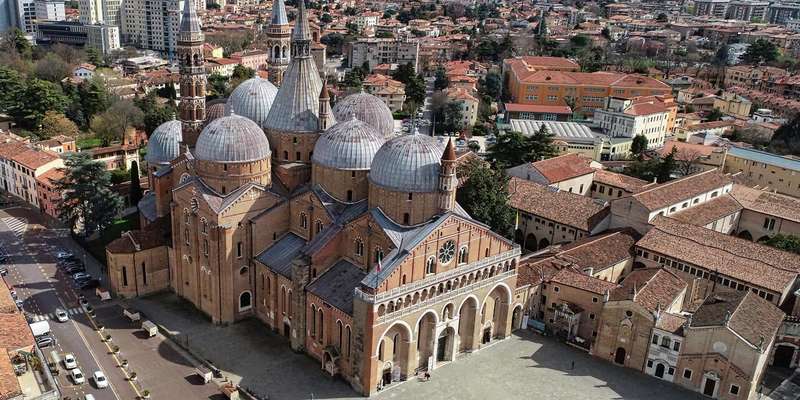- Home
- Useful Tips
- Padua's Jewish quarter:...
Exploring Padua's Jewish Quarter presents a unique challenge for travelers: how to fully appreciate its profound historical significance without missing key sites or understanding their context. Over 60% of visitors spend less than an hour in this culturally rich area, unaware that its synagogues and memorials tell a continuous 500-year narrative of Jewish life in Venice's mainland territory. The quarter's scattered layout and varying opening hours create confusion, leaving many with fragmented impressions of what UNESCO recognizes as one of Italy's most intact medieval Jewish districts. Between the Italian Synagogue's hidden courtyard location and the Holocaust Memorial's limited access days, even historically-minded travelers often leave feeling they've glimpsed only part of the story. This matters because Padua's Jewish community – one of Europe's oldest – developed unique traditions that shaped Venetian commerce and medicine, yet their physical legacy remains easy to overlook amid the city's more famous attractions.


Navigating the Quarter's Scattered Historic Sites
The Jewish Quarter's layout reflects centuries of organic growth within medieval Padua's constraints, creating a puzzle for modern visitors. Unlike compact ghettos in Venice or Rome, Padua's Jewish sites spread across several blocks near Piazza delle Erbe, with no obvious signage marking their significance. The Italian Synagogue (Scuola Italiana) hides behind an unassuming doorway in Via San Martino e Solferino, while the nearby German Synagogue (Scuola Grande Tedesca) now serves as a university building with limited public access. Local historians recommend starting at Via delle Piazze 26, where a plaque marks the former Great German Synagogue's location, then walking the perimeter of what was once the compulsory living area. This approach helps visualize the quarter's original boundaries before exploring interior spaces. Morning light particularly enhances the Italian Synagogue's 16th-century interior, where gilded inscriptions glow against dark wood paneling.
Timing Your Visit for Optimal Access
Padua's Jewish heritage sites operate on conflicting schedules that frustrate spontaneous visitors. The Italian Synagogue opens Sundays through Thursdays (10am-1pm, 2pm-6pm) but closes entirely in August, while the adjacent Museum of Jewish Art follows academic term hours. Local caretakers suggest Wednesday mornings as the sweet spot, when all accessible sites coincide with the Padua Synagogue's guided tour schedule. Summer visitors face special challenges – though the shady porticoes provide relief from heat, many sites reduce hours during Ferragosto. Those arriving unexpectedly can still appreciate the quarter's atmospheric streetscapes: the cobbled Via dell'Arco marks the original ghetto gate location, and several buildings retain Hebrew inscriptions in their foundations. For deeper context, the University of Padua's Jewish history department offers free monthly walking tours that explain how the quarter's pharmacies and lending institutions operated.
Decoding Architectural Layers of History
The Jewish Quarter's buildings reveal centuries of adaptation, if you know where to look. While the Italian Synagogue maintains its original 1548 layout, neighboring structures show how Jewish families modified medieval homes to accommodate kosher kitchens and Sabbath elevators. Local architects point to subtle details like the double-door entrances on Via San Canziano – a security feature from when the quarter faced frequent attacks. The former Jewish hospital on Via Roma (now university offices) incorporates a rare example of Renaissance-era mikveh plumbing visible in the basement. These layers become meaningful when understood: the 17th-century fresco fragments uncovered behind Palazzo Cesarotti's modern facade reflect how wealthier families secretly decorated interiors despite external restrictions. Preservationists recommend focusing on three key periods: the 1509-1516 destruction era (look for rebuilt brickwork), the 1797 Napoleonic emancipation (wider doorways appear), and 1943-1945 deportations (memorial stones dot the pavement).
Respecting Active Community Spaces
Modern Jewish life continues quietly alongside historic sites, requiring visitor awareness. The still-active Synagogue in Via San Martino e Solferino holds daily services behind its 16th-century exterior – dress modestly when peering through the open door. Local community members request that visitors avoid photographing worshippers or touching the Holocaust Memorial's glass panels (which list over 200 deported names). Those interested in contemporary Jewish culture can time visits with the annual Jewish Literature Festival in June, when the quarter's courtyards host readings and kosher food stalls. For meaningful souvenirs, the Antica Drogheria Toso near Piazza dei Signori stocks Padua's only kosher food products, including Sephardic-style marzipan made from a 1700s recipe. Remember that Friday afternoons see increased activity as families prepare for Shabbat, creating a particularly atmospheric time to witness living traditions.



